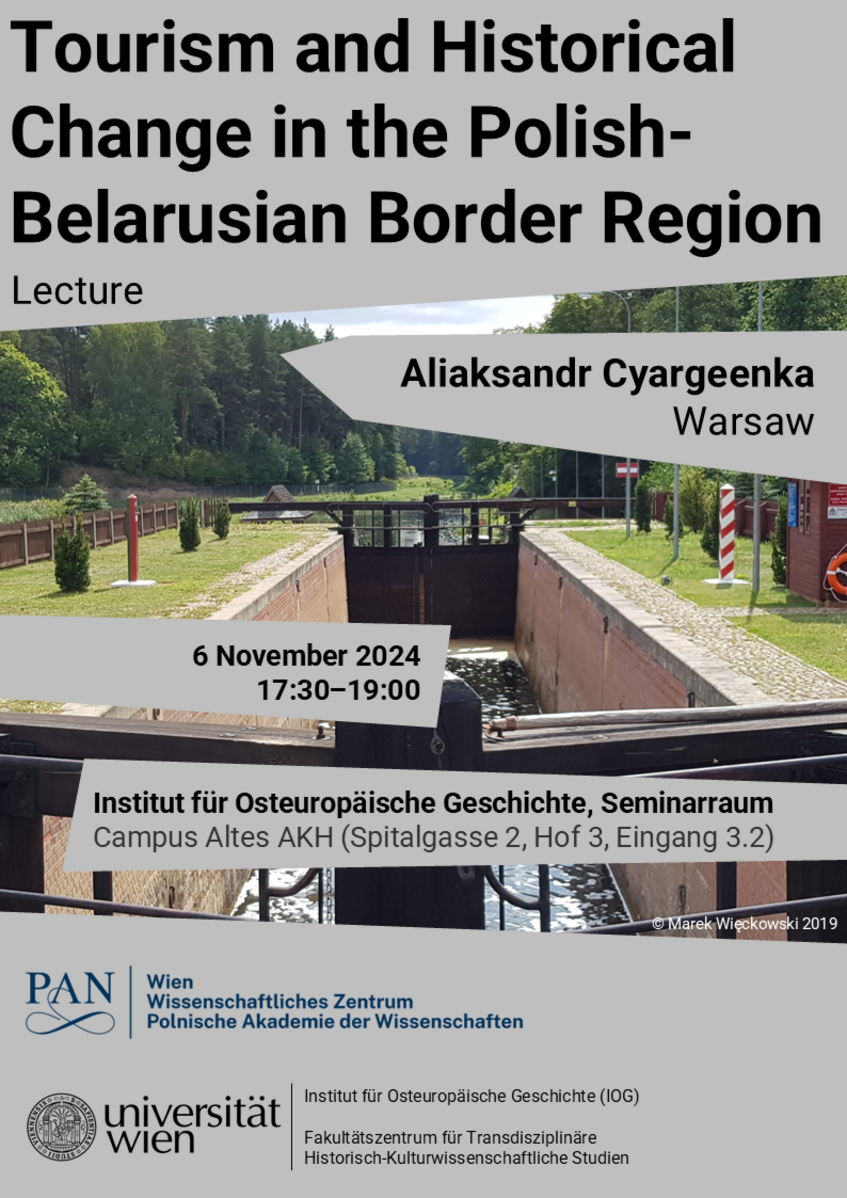
Tourism and Historical Change in the Polish-Belarusian Border Region
Lecture by Aliaksandr Cyargeenka (Polish Academy of Sciences, Warsaw)
06.11.2024, 17:30-19:00
Institut für Osteuropäische Geschichte (Campus Altes AKH, Hof 3, Seminarraum)
Organisation: Arbeitsbereich Historical Transregional Studies (Faculty Center) and the Department of East European History in cooperation with the Scientific Center of the Polish Academy of Sciences in Vienna
Contact: Friedrich Cain
Nestled between Poland and Belarus lie three attractive tourist destinations: the Augustów Canal, Białowieża Forest, and Brest Fortress. Since the dawn of the 21st century until 2020, there has been a notable rise in tourist activity, mostly along the Augustów Canal and within the Białowieża Forest. This increase can be attributed to extensive renovations and the opening of new border crossings. Such changes required an examination of tourist dynamics, seasonal patterns, and preferred modes of transportation. Notably, the relaxation of border regulations, particularly during the years 2015-2019, including the establishment of a visa-free zone in Belarus, has significantly impacted cross-border tourism. Through comprehensive data analysis, it becomes evident that Polish and Belarusian tourists predominantly visit these areas, although significant contributions come from neighbouring countries such as Russia, Lithuania, Germany, Czech Republic, and Ukraine. However, in recent years, both the Białowieża Forest and Augustów Canal have faced a series of challenges. On the contrary, the Brest Fortress Memorial Complex stands as one of the most popular tourist attractions inspired by (post)-Soviet symbolism related with history of World War II, drawing hundreds of thousands of visitors each year. These challenges are influenced by a myriad of historical and geopolitical factors, shaping the tourism landscape at both local, regional, national, and international levels. In summary, these destinations serve as prime examples of the multifaceted nature of tourism in the Polish-Belarusian borderland, influenced by cultural, historical, economic, geopolitical, and natural factors.
